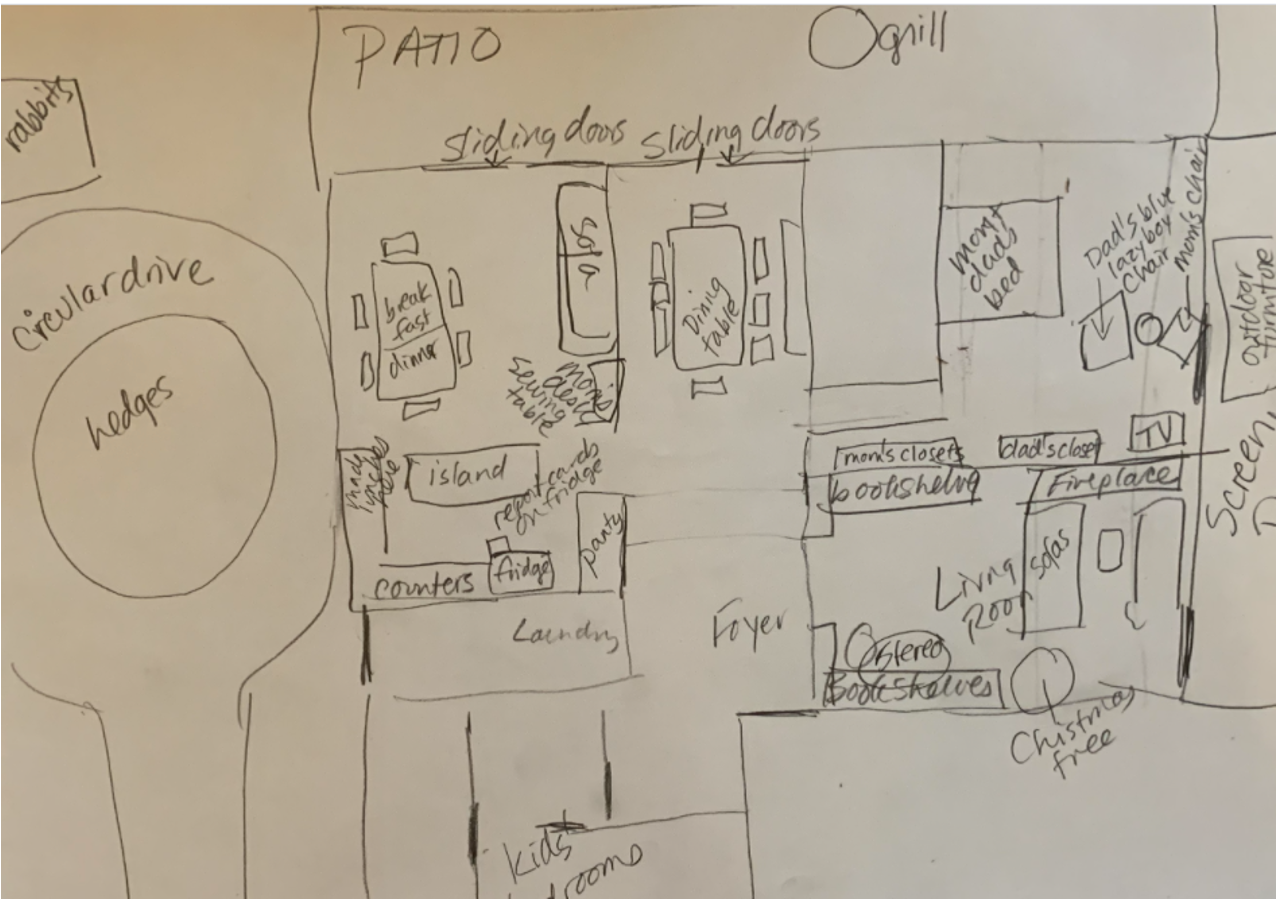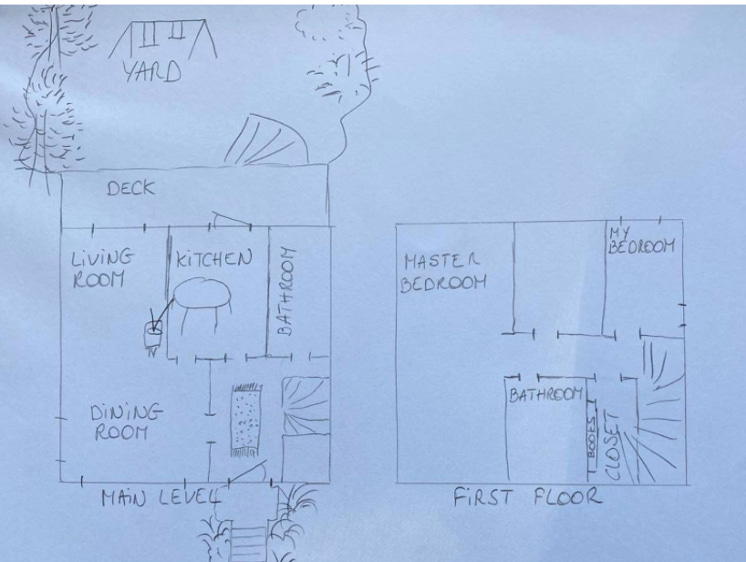Diving Gently into Your Own Story
Begin to Uncover the Impact of Childhood Trauma with Writing-to-Heal Strategies
When I’m teaching science-based writing-to-heal strategies, one of the exercises I ask audiences to start with is to think about and draw the floor plan of their childhood home.
When we’re trying to understand our own story, and how what happened to us might still be affecting us now, we often need a little help to take an emotional leap past any resistance or sense of not knowing where to begin.
Evidence that Childhood Trauma May be Affecting Your Daily Life
Perhaps you sense there’s a connection between the adversity you faced in your childhood and how you feel in your day-to-day life now. When childhood trauma remains unresolved, it can affect your well-being and your health. Here are just a few signs that childhood trauma might still be lodged in your nervous system:
You find yourself ruminating and getting caught up in endless thought loops you can’t escape.
You engage in a lot of negative self-talk, harshly judging yourself, putting yourself down, or talking to yourself in an admonishing, critical way.
You harshly judge others, focusing on how they hurt you or let you down.
You future-cast, imagining possible bad events or outcomes before they happen.
You find yourself flooded with overwhelming emotions after seemingly small triggers.
You struggle more than you’d like to with staying self-regulated when there is stress or chaos in your life.
You have difficulty expressing what you’re feeling or voicing what you need or want from others.
You struggle to set boundaries and often put others’ needs before your own.
A Drawing and Narrative Writing Prompt to Help You Begin Understanding Your Story
A gentle way to dive into better understanding your own story is to simply draw a rough floor plan of your primary childhood home when you were growing up.
If you want to explore this more, grab a piece of paper and a pencil and let’s begin! And remember, as you do this work, do it with compassion for you and for the child you once were, for the adult you are now, and for the person you hope to become. Remember, too, these are just rough sketches, no artistic skills required!
Instructions:
If you moved around a lot or lived in more than one house, draw the floor plan of the home you most remember living in.
Now go in and add three to six details, such as the kitchen table where you had dinner with your family, perhaps the closet where you kept your toys, or the front of the refrigerator. The more details the better. Do you remember the color of your closet door? How many chairs were at the dinner table? What photos or magnets were on the front of the refrigerator?
After you’ve added details, add the front and back doors of the house and the yard, street, or sidewalk outside. Add one or two details about the outside of your childhood home.
By adding in details, such as how many chairs sat at the dining room table, where the snack cupboard was, or the location of a favorite tree outside your window, a variety of feelings and memories may emerge for you. Some memories that emerge may be happy and fill you with well-being and feelings of safety. Others may be sad or bring up feelings of unsafety. Some locations might bring up feelings that are both happy and sad. That’s perfectly normal too.
Here are some examples of floor plans. The floor plan with the circular driveway on the left is of my own childhood home. On the right-hand side of my sketch, I drew in my father’s blue chair. My father died when I was 12, and I have a lot of happy memories of watching TV with my dad there. I also drew the bookshelves and stereo system in my childhood living room. After my father died, I often sat in our living room, missing him terribly, as I played the records of Broadway musicals we’d listened to together, and re-read the books we’d read together.
Now, take a moment to reflect on and write about the feelings that came up for you as you drew your childhood floor plan. What did daily life feel like for you growing up in your home? Simply jot down whatever feelings and emotions arise for you.
Pay attention to any new awareness that arises about how your childhood might still be affecting you now, and commit to working on better understanding this connection.
Writing-to-heal with narrative prompts like these can help you gain clarity on how old feelings and self-beliefs might still be trailing after you today, like small ghosts, shaping your self-view and influencing how you respond to stress as an adult. This is how we become aware of our triggers, regulate our nervous systems, and begin to heal.
(As always, if you need more help or support after doing this exercise, call a friend, or reach out to a trusted mental health practitioner.)
If you enjoyed this drawing and narrative writing prompt, and want access to additional writing exercises, and more help along the way, might I suggest picking up a copy of my latest book, the Adverse Childhood Experiences Guided Journal. My guided journal is a tool that allows you the space to process, heal, and reclaim yourself. It’s full of hundreds of writing-to-heal, drawing, and mindfulness prompts and exercises to help you embark on a curated, science-based, step-by-step healing journey.
Yours,
Donna
Follow-up: How did you find this prompt? Did you notice any resistance in your body at first? Remember to be kind and compassionate with yourself as you go through this process. This exercise may have stirred up a lot of emotions, so try to observe these thoughts without judgment. These are parts of you that may have never had a chance to express themselves before.
Often, feelings emerge that can bring up a sense of not having been good enough. Why? When you experience adversity growing up, you need the adults around you to reassure you you’re safe and loved, and that you are not to blame for what’s happening. When the adults in your life don’t do these things, you begin to believe that what’s happening must be your fault. This belief takes hold early on – when you’re too young to question it – and it can shape your view of who you are. Simply letting these younger parts of yourself know that you’re listening, that you see this connection, and that you are committed to waking up on your own side, can be a powerful step toward healing.
This is healing happening in real-time. After completing the prompt, consider taking a moment before diving back into your routine. Be gentle with yourself and try something comforting—maybe a walk, listening to music, or a warm bath. I’d love to hear if you found this exercise helpful and how you took care of yourself afterwards.
Note: Some of my free content here is also available on Psychology Today.






